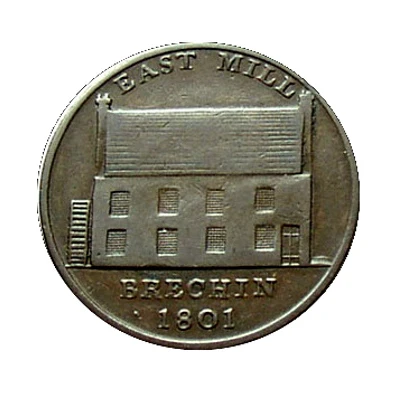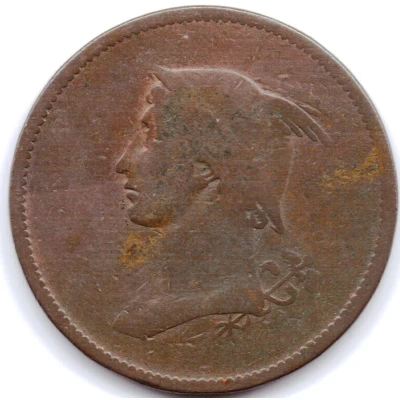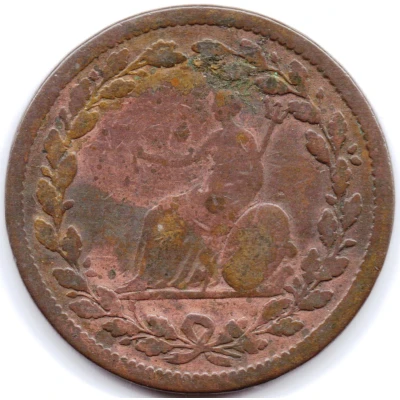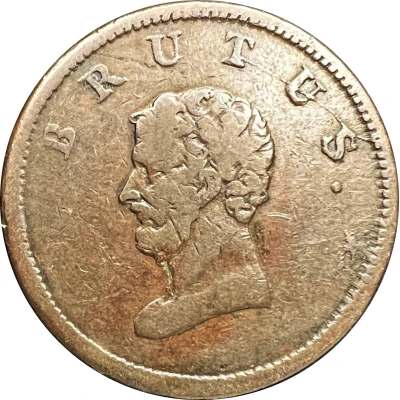
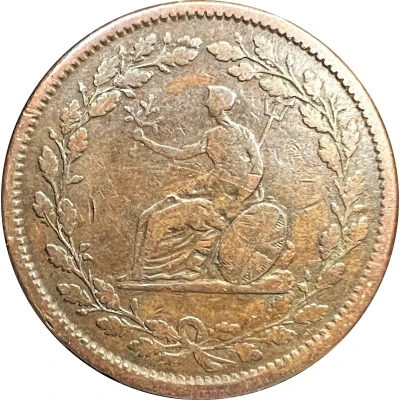

½ Penny British Copper Company - Brutus ND
| Copper | 8.8 g | 29 mm |
| Issuer | United Kingdom (United Kingdom, British Overseas Territories and Crown Dependencies) |
|---|---|
| King | George III (1760-1820) |
| Type | Token |
| Years | 1809-1810 |
| Value | ½ Penny (1⁄480) |
| Currency | Currency tokens (1798-1816) |
| Composition | Copper |
| Weight | 8.8 g |
| Diameter | 29 mm |
| Shape | Round |
| Technique | Milled |
| Orientation | Coin alignment ↑↓ |
| Demonetized | Yes |
| Updated | 2024-10-09 |
| Numista | N#66464 |
|---|---|
| Rarity index | 60% |
Reverse
Britannia seated left holding olive branch and trident, a shield at her side. Initials BCC (British Copper Company) on the ground below; all within an oak-wreath.
Engraver: Thomas Wyon the Younger
Edge
Grained
Comment
The Brutus token was issued c.1809 - 1810 by the British Copper Company at Walthamstow in Essex. The principal die engraver was most likely Thomas Wyon the elder (1767–1830). About 1796, Thomas went into business in Birmingham with his brother Peter as a general die-engraver. From 1800, he carried on his business from London, where he engraved many dies for tokens, and in 1816 he was appointed chief engraver of the seals. He died on 18th October, 1830.
These tokens were issued by the British Copper Company, a Welsh based company which, in 1808, bought the Walthamstow site beside the River Lea. Walthamstow is now a suburb of north east London. The copper was smelted in "Landore" near Swansea in South Wales and brought by barge around the south coast up the Thames and the Lea to the mill. The copper ingots were then rolled into thin sheets which were sent all over the country to be stamped into coins. The main purpose of the BCC would have been to sell its copper, whether in the form of tokens, or sheets of metal. These penny and half penny tokens were not issued exclusively for use in Walthamstow, the halfpennies in particular do not bear the name of a place where they could have been redeemed except the very tiny BCC found on the ground by Britannia's shield. The copper rolling mill buildings at Walthamstow were converted into a pumping station in the 1860's and were later incorporated, by Thames Water, into a large water treatment works.
These 19th Century tokens were issued at the beginning of that century because official coins were in short supply. The cumbersome "Cartwheel" issues had proved short-lived, the twopence was discarded and the penny, halfpenny and farthing were reduced in size. Even so, the supply of these coins did not keep pace with the demand and by 1811, penny, halfpenny and farthing tokens were being manufactured. These tokens, tolerated by the government (in spite of being illegal), became extremely popular and were accepted locally as a regular medium of exchange. These tokens can in a way be considered to be coins, as that is what their main function was. They were all banned following the great re-coinage of 1816.
Withers #618 shows a slightly smaller and older looking bust. The obverse legend reads "BRUTUS." with a period. The wreath on the reverse has twenty acorns, 11 on the left side and 9 on the right. All the barbs of the trident nearly touch the wreath.
Enlarged picture showing the BCC below the shield:
Interesting fact
One interesting fact about the Token ½ Penny (British Copper Company - Brutus) ND (1809-1810) from United Kingdom is that it was created as a private token coinage by the British Copper Company, which was established in 1809 to alleviate the shortage of small change in the UK. The coin features a bust of Brutus, a legendary figure in British history, on one side and an image of a Britannia on the other. The use of private token coins was eventually abolished in 1811, making this coin a unique piece of British numismatic history.


